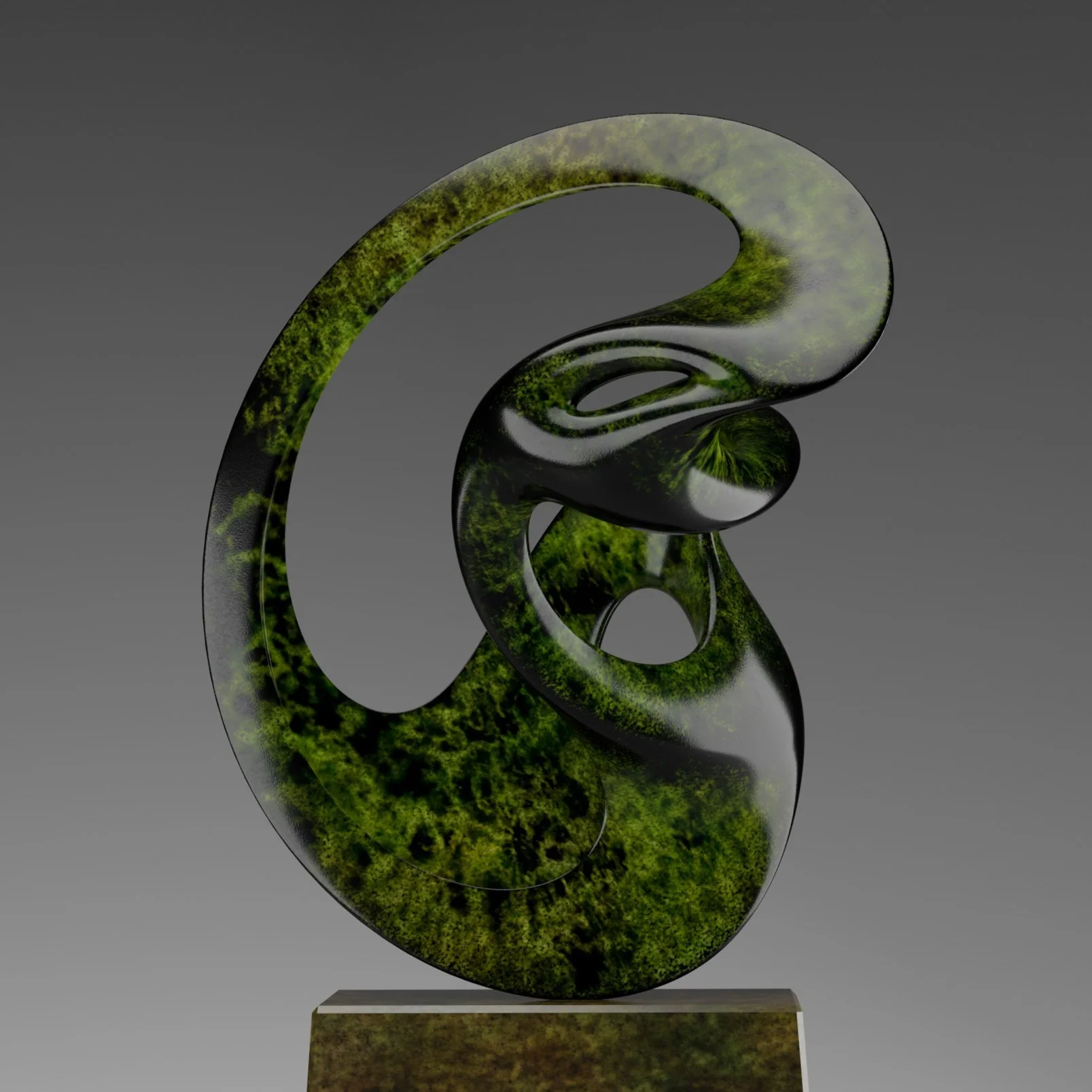Emerald Green Patina with Light Detailing Recipe and Method
Emerald Green Patina with Light Detailing
This patina technique produces a vibrant emerald green surface with delicate detailing and a contrasting dark background. The primary colouring agent is genuine chromium oxide, which bonds strongly to bronze and maintains its stability even under high heat. Careful application ensures a balanced and layered effect, avoiding an overly opaque or solid appearance.
Metal Preparation and Process
Material : Cast Silicon bronze
Surface Prep : Sand to a smooth 80 or 120 grit finish to ensure optimal adhesion.
Base Coat Colour
Chemical Used : M20 Antiquing Solution / Liver of Sulphur / Ammonium Sulphide
Process
Warm the bronze gently, taking care not to overheat.
Apply a weak solution of M20 evenly, allowing the surface to develop colour gradually.
Rinse thoroughly with water and brush to neutralise the reaction and remove residue.
Heat until a fine dusty film forms on the surface, then use a soft abrasive pad (e.g., 120 grit Scotch-Brite) to remove it.
Wash and repeat until you reach the desired finish.
First Colour Coat
Solution 1 Ingredients :
250ml water
1 teaspoon weak copper nitrate solution
Solution 2 Ingredients :
½ teaspoon chromium oxide
add a small amount of weak sodium silicate solution (as a fixative)
Application :
Heat the bronze evenly so the solution lightly sizzles and evaporates upon contact.
Stir solution 2 often to keep chromium oxide suspended, as it settles quickly.
Apply both solutions in small amounts with a natural-hair brush, working in a dabbing motion to create a broken, mottled green pattern. Avoid pooling or runs to maintain a light, transparent effect.
Leave parts of the dark base coat or bronze visible for contrast.
3. Second Colour Coat
Solution Ingredients :
250ml water
3–4 teaspoons strong copper nitrate solution
Weak sodium silicate solution
Application :
While the bronze is still warm, carefully apply the solution to avoid overheating, which can cause discolouration.
Use a natural-hair brush to apply the solution in delicate dabs, allowing it to evaporate naturally.
Create loose, naturalistic light blue patterns that complement the green base. The patterns should appear slightly larger than the brush head.
4. Third Colour Coat
Solution Ingredients :
250ml water
2 teaspoons medium copper nitrate solution
½ teaspoon chromium oxide
Weak sodium silicate solution
Application:
Maintain the heat from previous coats; reheating from cold can cause patchy brown discoloration.
Apply small amounts of the solution with a natural-hair brush, stirring frequently to keep the chromium oxide evenly suspended.
Focus on creating intense green patterning that mutes and balances the earlier light blue layers, adding depth to the patina.
Finishing Touches
1. Sealing
Product : Sculpt Nouveau Smart Coat (1K Polymer Sealant) / Incralac Lacquer
Apply thin coats at room temperature using a soft cloth or brush.
Allow each coat to dry completely before applying the next.
2. Highlighting
Mix a small amount of pigment with the sealant and use a sponge or brush to add subtle highlights where needed.
3. Shadowing
Prepare a translucent paste by thinning graphite wax with clear wax.
Apply to create shadows or darken areas as desired, either under or over the final wax layers.
4. Final Waxing
Product : Renaissance Wax / Paste wax /Ceramic Wax
Apply thin layers with a soft brush.
Let each layer sit for 10 minutes to evaporate, then buff to a hard finish.
Repeat 3–4 times for a rich, durable surface.
Tips for Success
Avoid Overloading : Apply chromium oxide sparingly to prevent solid, opaque patches. Focus on a light, broken texture.
Control Heat : Maintain consistent heat to avoid unwanted discolouration.
Sealing Effect : Sealing enhances the patina’s vibrancy, much like dipping a dusty pebble in water to reveal its colours.
Variations : Adjust the recipe to develop variations to suit your specific needs.
Final Result
The finished patina offers a vibrant emerald green with layered depth and subtle light detailing. The sealed surface enhances colour intensity, creating a dynamic, visually engaging finish.



